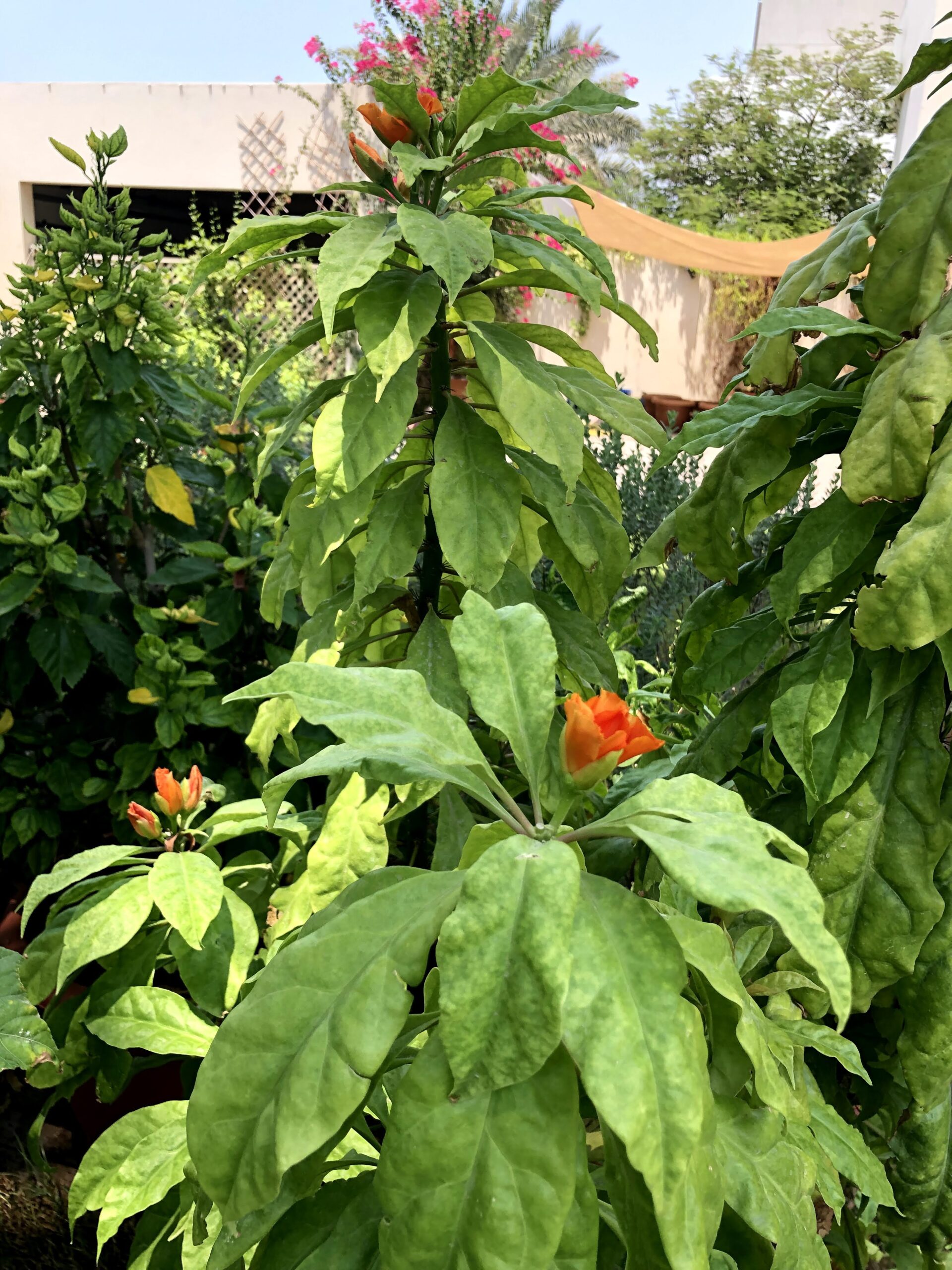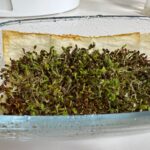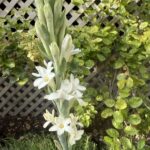A very pretty plant belonging to the succulent family which does reasonably well in the shade in the summer here. It is quite a heavy feeder but produces beautiful flowers in the summer bringing a splash of color to our otherwise dull summer gardens ( an apology to the Portlucas and Jasmines). The biggest danger it has is overwatering, but that is easily resolved by touching the soil before watering. It cannot take the direct sun but does well under the nets or under a large tree where it happily produces beautiful flowers. I have a large one which has beautiful orange flowers but had begged for and planted a cutting with red flowers. But hold your breath, Pereskia actually belongs to the Cactus family.
Native to Brazil, the Pereskia Grandiflora, belongs to the Genus Cacti and is often referred to as leaf cacti but is quite unusual as they look more like other shrubs with large bright green leaves and long stems. But they actually qualify as cacti because of their spines which grow from aureoles, a distinct feature of the cactus family.

Pereskias are considered the ancestors of all cacti, but discerning their evolutionary path is a bit tricky. Because they grow in desert terrain, fossil records never form. Cacti occur in only the New World, but DNA data and the kinds of pigments found in their flowers, suggest their distant relatives are African. How can this be?
The answer lies in the theory of continental drift, another affront to some belief systems. Geophysicists call it a “theory” because a few details are yet to be worked out, but in the last 40 years, it has become universally accepted amongst earth scientists.
My Pereskia has orange flowers but all my research on the internet shows that they produce mostly white to rose-pink flowers. As I have just planted a cutting of the pink, I will be able to report back soon whether the orange is an anomaly or a nutrient deficiency. Nevertheless, the color is stunning.
Pereskias need loads of light, but I would still suggest shade here in the peak summer as the leaves do get scorched. They don’t suffer too much if underwatered but are really damaged by overwatering. They do well in warmer temperatures and need a well-draining soil mix you would use for your succulents. So do add lots of organic matter to your mix. To bloom well they need regular feeding and a well-balanced fertilizer.
They are easily propagated from cuttings. Just cut one of the thicker stems at an angle coat the end generously with cinnamon powder and/or honey or a commercial rooting powder and plant. The cutting takes a while to establish but remember to avoid overwatering. Pereskias seem to thrive on neglect and they need a warm moist area so cuttings root easily even in May here in the Gulf.
They like dry conditions and need to be repotted rarely. However, be careful of the spines while repotting. Just lift it out of the container and place it in the other container before backfilling with new soil. Also, remember to leave it be for a while after repotting – don’t water it as you will stress the plant.
Normally cacti are not very susceptible to pests, Pereskias seem to have their share of Mealybugs, Scale insects, and Whiteflies. The treatment is the same as for other plants.








Recent Comments